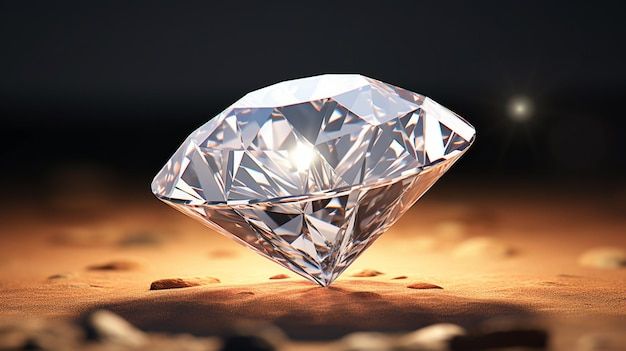"Diamonds are forever" Really? But which one, Naturally grown or Lab grown?
Diamonds symbolize wealth and exclusivity, but their high cost is driven more by market dynamics and artificial scarcity than actual rarity. Is Lab-Grown diamond a substitute for this? Let's explore....
2/21/20252 min read


"Diamonds are forever—we hear this advertisement all the time. But what value do they actually provide? Maybe they bring happiness, or perhaps wearing one makes you feel wealthy. However, this is just a state of mind. Why do diamonds make people feel rich? Because they are expensive. And why are they expensive? Because they are not abundantly available. But is it truly because diamonds are rare in nature, or do diamond companies deliberately create scarcity by slowing down mining? Maybe, maybe not. The price of any product is determined by the supply and demand equation. If demand is high but supply is limited, the price of that product naturally rises.
That being said, I am not here to discuss the diamond production process but rather to suggest an alternative. People are drawn to diamond jewelry because it looks stunning and carries a high price tag, which gives a sense of prestige. However, when compared to gold in terms of future value or appreciation, diamonds are not as beneficial. For example, if you get bored of wearing the same gold jewelry for years, you can exchange it for a newly designed piece. While jewelers may charge a making fee and there might be a small difference between the buying and selling price, you don’t lose much of the gold's value. In contrast, when it comes to diamond jewelry, you may lose 25% to 50% of its value because there is little to no resale market for used diamonds. Jewelers make many promises when selling diamond jewelry, but when you try to resell it, the price you receive is often disappointing.
Factors Affecting Diamond Resale Value:
Retail Markups:
Jewelers apply high markups (sometimes 100% to 300%) to cover branding, overhead costs, and profit margins. When reselling, you’re only offered the wholesale or secondhand market price, which is much lower.
Lack of Strong Secondhand Market:
Unlike gold, which has a standardized resale value, used diamonds do not have a strong resale market. Buyers usually prefer new diamonds over secondhand ones.
Quality & Certification:
If your diamond is certified by GIA (Gemological Institute of America) or another reputable authority, it might fetch a slightly better resale price. However, uncertified diamonds have even lower resale value.
Size & Demand:
Larger diamonds (over 1 carat) retain more value than smaller ones.
Rare cuts or lower-quality diamonds may be harder to resell.
Jeweler's Buyback Policy:
Some jewelers offer a buyback or exchange program, but they typically offer only 50% to 70% of the original price (if at all)
So, what’s the solution? Should we stop buying diamond jewelry altogether? How can we fulfill our desire to wear beautiful diamond jewelry without overspending? The answer lies in lab-grown diamonds. These diamonds are created using the same process that naturally forms diamonds in the earth, but they take significantly less time to develop. Lab-grown diamonds look identical to natural diamonds, and even experts often cannot tell the difference.
Lab-grown diamonds are significantly cheaper than natural diamonds, typically costing 50% to 70% less. The exact price difference depends on the diamond’s size, quality, and certification.
Key Similarities Between Lab-Grown & Natural Diamonds
✅ Same Physical & Chemical Properties – Both are 100% real diamonds, with identical hardness, brilliance, and durability.
✅ Certified by GIA, IGI, etc. – Lab-grown diamonds also come with proper certification.
✅ Ethically Sourced – No environmental damage or conflict issues, unlike mined diamonds.
So, why spend a fortune on expensive mined diamonds when you can get the same beauty and quality at a much lower price?"
